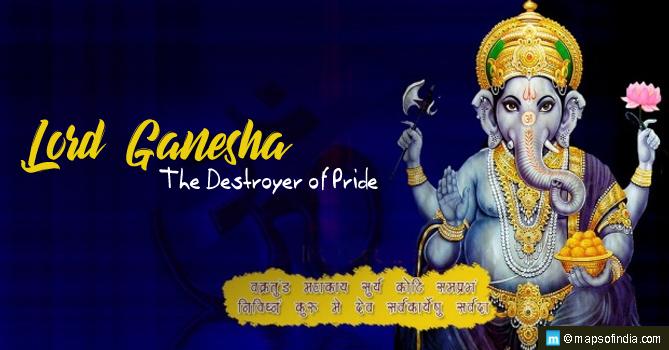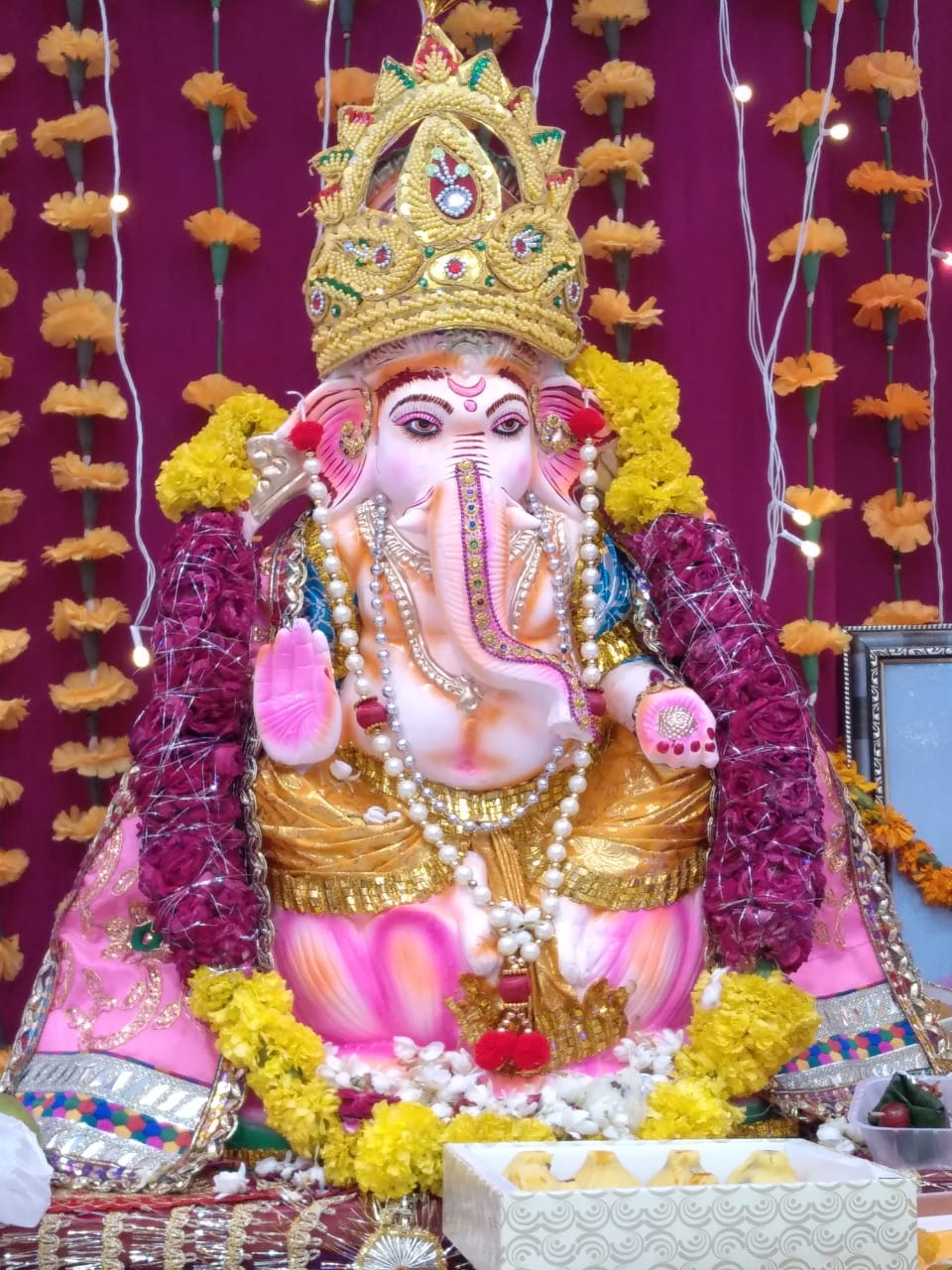
Lord Ganesha – the Destroyer of Pride and the Lord of Success is the elephant deity of Hindus. Son of Lord Shiva and Parvati, Ganesha rides on a mouse and has a trunk, large ears, and pot belly and loves to eat Modak and Laddu. Ganesha is worshipped as a Lord who can clear all the obstacles and also to gain knowledge, wealth and wisdom.
Meaning of the form of Ganesha
Head of Ganesha signifies soul which is the eventual truth of human beings and their existence. Elephant head also represents wisdom.
Trunk symbolizes Om that is the symbol of cosmic truth.
A goad in the upper right hand is to push mankind on the eternal path. It also means the removal of obstacles on that path.
The noose in the left hand of Ganesha is for capturing all the difficulties.
Broken tusk in his lower right hand symbolizes sacrifice. Lord holds it like a pen and moreover it is believed that he broke it for writing Mahabharata.
The rosary in His lower right hand depicts the continuation of knowledge.
One must keep on searching for the sweetness of the soul that is represented by a Ladoo or modak held by His trunk.
Lord Ganesha’s big ears represent that He is always there to hear our grief and petitions.
Energy of all kinds is represented by a snake that runs around his waist.
He is humble which is represented by a mouse, the lowest creature on which Lord Ganesha rides.
Birth of Lord Ganesha
There are two stories related to the birth of Lord Ganesha and how He got His elephant head. A story depicted in the Shiva Purana, is like this – Once goddess Parvati created a boy out of the dirt of her body while bathing, called him her son and asked him to guard the door. When Lord Shiva returned home, He was stopped by that boy. On this, Lord Shiva got very angry and He then cut the head of a boy. Goddess Parvati broke down and asked Lord Shiva to give her son back. Lord Shiva ordered His gana (squad) to get the head of a baby sleeping facing the north and away from his mother. The squad found the sleeping baby elephant and so got the head. Lord Shiva then joined the elephant’s head on His son’s body. Lord Ganesha was then made the leader of his squad, so known as ‘Ganapati’. Lord Shiva also bestowed a boon that people will keep worshipping him, especially before any new venture.
There is another but less popular story in the Brahma Vaivarta Purana regarding the birth of Lord Ganesha. Shiva and Parvati wanted to have a son and so Lord Shiva asked Parvati to appease Lord Vishnu by keeping the punyaka vrata for a year. A son was born to the couple. All gods and goddesses came to celebrate the birth of their child. Lord Shani, the son of Surya (Sun-God) was also there but he refused to look at the baby, as his looking might harm the baby. But Parvati insisted Lord Shani to look the baby and when He looked the child’s head was cut off immediately. All the gods started to be sorry. Then Lord Vishnu went to the bank of River Pushpabhadra and brought back the head of a baby elephant. This head was then joined to the baby’s body and so Ganesha came into existence.
Ganesha Chaturthi
Lord Ganesha’s birth is celebrated as Ganesha Chaturthi. The day is also known as Vinayaka Chaturthi (festival of Ganesha). It is celebrated in the Hindu calendar month of Bhaadrapada (19th August – 20th September). Ganesha Chaturthi is celebrated for 10 days with full enthusiasm but particularly in the states like Maharashtra, Gujarat, Tamil Nadu, Goa, Andhra Pradesh, Karnataka, Odisha and Chhattisgarh. For the festivals, clay models of Lord Ganesha in varied sizes and forms are made that are beautifully decorated. To start the festival Ganesha statue is installed at home. Puja is performed with other rituals and then after 1, 3,5, 7 or 11 days statue is immersed in the water.
Lord Ganesha is the destroyer of pride and vanity.
Related Links:




